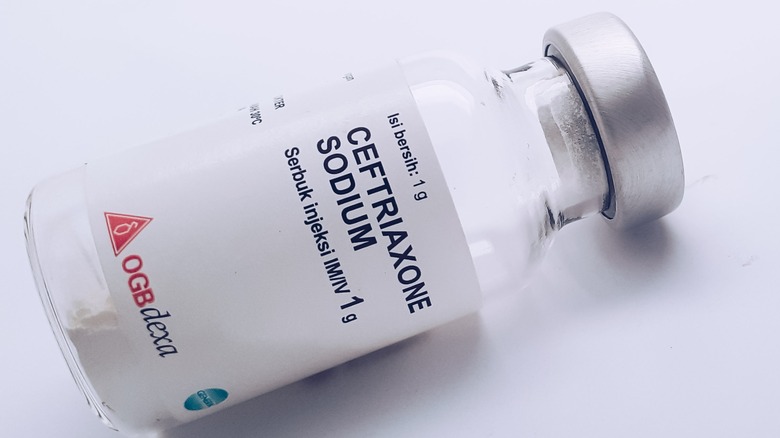How Is Gonorrhea Treated?
Gonorrhea is caused by a bacteria that passes from one person to another via sex, whether oral, vaginal, or anal, explains the Mayo Clinic. The only exception is during childbirth when a mother can pass it along to her baby as they emerge from the vaginal canal and come into contact with the bacteria. Once transmitted, the bacteria infect the genital area and reproductive tract.
While the infection isn't often accompanied by symptoms, you may notice that urination causes pain or find abnormal discharge emerging from either the vagina or penis, as per the Cleveland Clinic. In biological females, gonorrhea can lead to irregular bleeding between menstrual cycles and abdominal pain, while biological males may experience testicular pain. If the infection has taken root in the throat, symptoms can include irritation and difficulty swallowing. Finally, in the anal region, you may feel pain and itching, especially when passing a bowel movement.
In order to treat a gonorrhea infection, it's important to properly diagnose it first. This is typically done by taking a fluid sample or swabbing the potentially infected area (per the Cleveland Clinic). A pelvic exam and urine sample may also be relevant. Once diagnosed, your doctor will prescribe a treatment regimen to get rid of the infection.
Gonorrhea requires antibiotic treatment
Once gonorrhea is diagnosed, it's crucial to proceed with treatment, explains Healthline. This is because the infection can cause long-term complications, such as pelvic inflammatory disease (PID) in biological females, which leads to reproductive organ damage. Complications for biological males include a scarred urethra and an abscess within the penis. These issues in both sexes can in turn affect fertility. In very rare cases, a gonorrhea infection can make its way into the bloodstream and cause heart problems.
The U.S. Centers for Disease Control and Prevention (CDC) notes that an antibiotic known as ceftriaxone is often prescribed for treatment, which should be administered intramuscularly. The recommended dose of the antibiotic is 500 mg and only one dose is necessary. That being said, due to the bacteria's increasing tendency to become resistant to antibiotic treatment, re-testing should occur three months after the injection, and sooner (within a few days) if symptoms continue.
The Mayo Clinic offers an alternative if a patient is allergic to the ceftriaxone class of antibiotics. In this case, a doctor may prescribe a combination of the antibiotics azithromycin and gemifloxacin to be taken orally. Partners of anyone diagnosed with gonorrhea will also need to undergo treatment to ensure the infection is not passed back and forth. Finally, in the case of gonorrhea being transmitted to a baby during birth, the CDC recommends either an application of an antibiotic ointment or an injection of ceftriaxone, with the dosage adjusted for weight.


